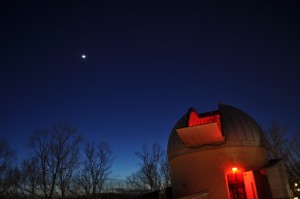See front page of NOVAC Site for changes to event. More information about Great Meadow including directions and parking visit the Great Meadow Site page.
Public Night @ Sky Meadows in conjunction with SI – Check http://www.novac.com/wp/observing/sky-meadows/ for site details and directions.
AKA “Ring of Fire” eclipse. Maximum eclipse at 6:04 am UTC. Decent visibility for Australians and GREAT visibility for Antarcticans. Er, south-polers? Penguins.
Gary Hand will speak on – Amateur Astronomy: 1994, Today, and 2034
This shower is composed of dusty remnants of the famed Halley’s Comet. The long-running shower is visible from April 19th until May 28, but peaks overnight on May 5th with up to 60 sightings per hour. The first quarter moon should set right around midnight local time, which will really improve conditions for spotting meteors. Though the meteors can appear anywhere in the sky, it will appear that they are coming from the Aquarius constellation.

Talk at 8:00PM. Observing session from 8:30PM to 10:30PM. Please verify the event is still on at the website below before going!
Campus Map – The George Mason University Observatory at the Fairfax Campus building Research Hall formerly known as Research I.
Saturn will make its closest approach of the year and will be reflecting plenty of the sun’s light, making this the best opportunity to spot it. A medium telescope (about 5-8 inches) is needed to see the rings and some of the largest moons which will also be lit up from the sun.
May’s Full Moon is the “Milk Moon”, “Flower Moon”, “Corn Planting Moon”, “Hare’s Moon”, or “Buddha Poornima”.

